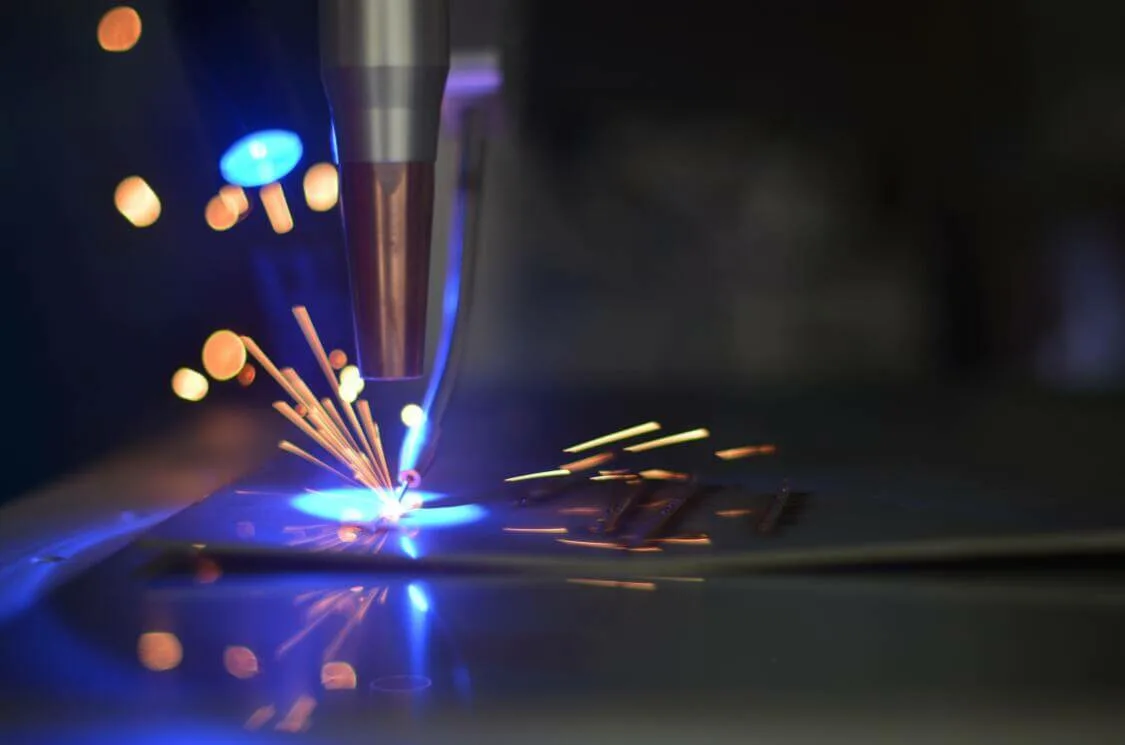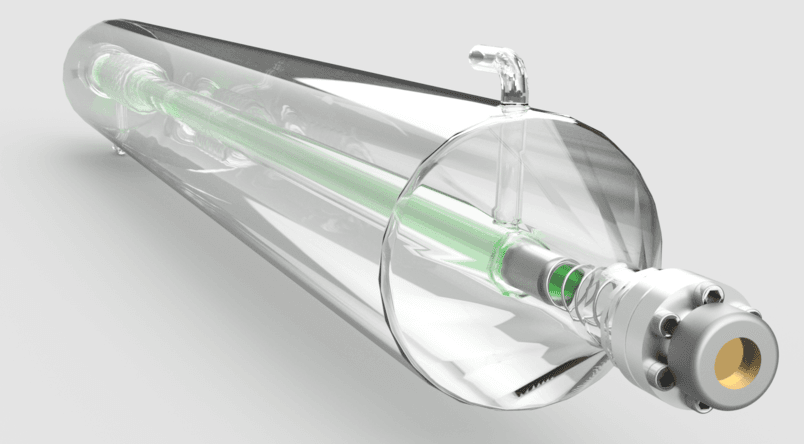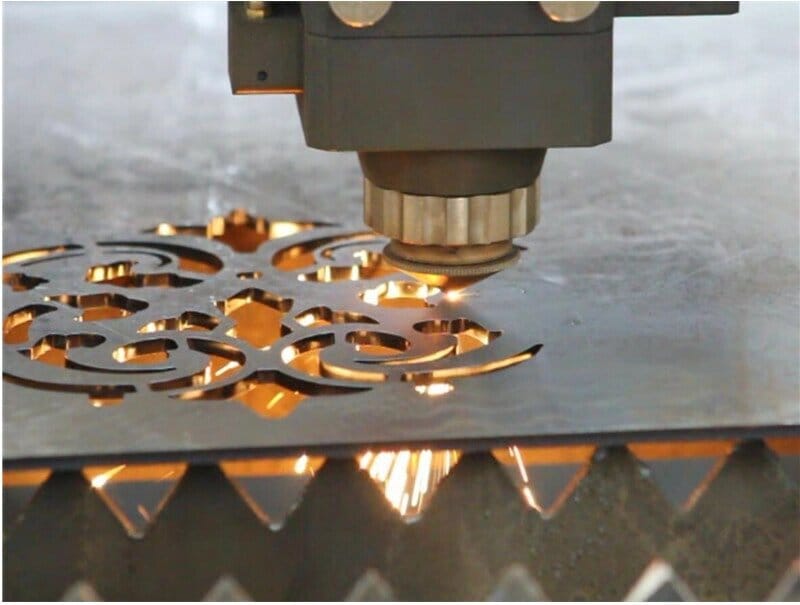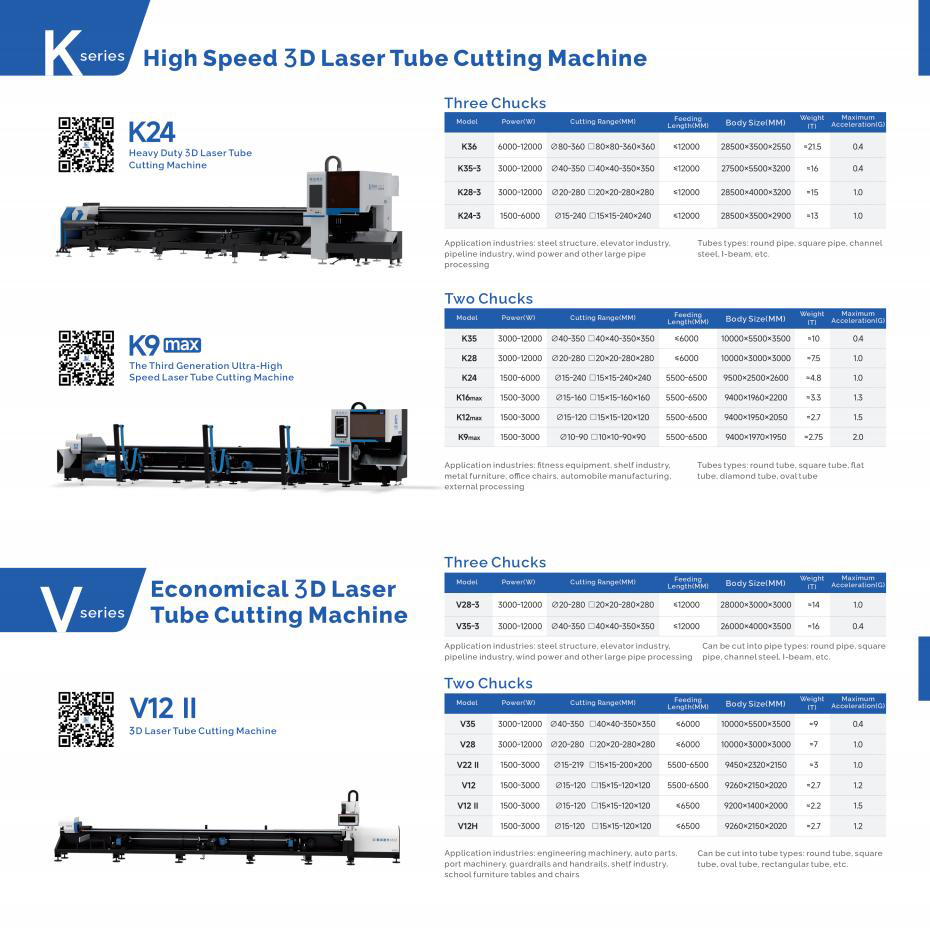1. Giriş
Boru bükme makineleri otomotiv, havacılık, mobilya tasarımı ve inşaat gibi endüstrilerde hayati bir rol oynayan modern üretimde esastır. Yüksek kaliteli boru bükme makineleri pazarının 2026 yılına kadar önemli talebi yansıtarak 5 milyar dolara ulaşması bekleniyor. Bu makineler üretim kapasitesini artırır, ürün kalitesini artırır, israfı azaltır ve güvenliği artırır. Çeşitli seçenekler mevcut olduğundan, üreticiler için doğru ekipmanı seçmek çok önemlidir.
2. Boru Bükme Makinelerinin Temelleri
2.1 Boru Bükme Makinesi Nedir?
Boru bükme makinesi, metal boruları, boruları ve profilleri hassas bir şekilde bükmek için özel olarak tasarlanmış mekanik bir cihazdır. Malzeme bütünlüğünden ödün vermeden çeşitli karmaşık bükme şekilleri ve açıları oluşturabilirler. Modern boru bükme makineleri, basit manuel cihazlardan karmaşık bilgisayarlı sayısal kontrol (CNC) sistemlerine kadar çeşitli tiplerde gelir ve farklı ölçeklerde üretim ihtiyaçlarını ve hassasiyet gereksinimlerini karşılar.
2.2 Ana Tip Boru Bükme Makineleri
Farklı bükme prensiplerine ve uygulama senaryolarına dayanarak, boru bükme makineleri aşağıdaki ana tiplere ayrılabilir:
Basın Bükücüler
- Çalışma prensibi: Boru malzemesine basınç uygulamak için istenen bükülme şeklini içeren iki kalıp kullanır.
- Avantajları: Düşük maliyetli, hızlı bükme hızı.
- Dezavantajları: Daha düşük hassasiyet, boru malzemesinin tamamen deformasyonuna neden olabilir.
- Uygulamalar: Düşük hassasiyet gereksinimleri olan basit bükme işleri için uygundur.
Döner Çekme Bükücüler
- Çalışma prensibi: Boru malzemesini şekillendirmek için dönen bir kalıp kullanır; Borunun dış çapı kelepçelenir ve bükme kalıbının etrafına bükülür.
- Avantajları: Yüksek hassasiyet, karmaşık şekillere uygun, hızlı bükülme hızı.
- Dezavantajları: Daha yüksek kurulum maliyetleri, farklı şekiller farklı araçlar gerektirir.
- Uygulamalar: Otomotiv, havacılık, mobilya imalatında yaygın olarak kullanılır., rulo kafesler, mobilya çerçeveleri, korkuluklar vb.Yapmak için uygundur.
Sıkıştırma Bükücüler
- Çalışma prensibi: Boru malzemesine istenen bükülme noktasında basınç uygulayarak boşluğa bükülmesine neden olur.
- Avantajları: Hızlı bükme hızı, basit takım kurulumu.
- Dezavantajları: Tüp malzemesinde hasara veya kırılmaya neden olabilir, yalnızca sınırlı çaplı tüpler için uygundur.
- Uygulamalar: Esas olarak inşaat endüstrisindeki elektrik borularını bükmek için kullanılır.
Rulo Bükücüler
- Çalışma prensibi: Boru malzemesini bir dizi silindir vasıtasıyla istenen bükülme açısına sahip bir bobine iter.
- Avantajları: Aletleri değiştirmeden farklı boyutlarda boruları bükebilir, birden fazla düzlemde kıvrımlar oluşturabilir.
- Dezavantajları: Süreç daha yavaştır, iyi bir hassasiyet elde etmek için birden fazla deneme ve hata gerektirebilir.
- Uygulamalar: Boru bobinleri ve kafes çubuk bükme gibi çoklu bükme eğrileri gerektiren boru malzemeleri için uygundur.
Mandrel Bükücüler
- Çalışma prensibi: Bükme işlemi sırasında çökmeyi önlemek için boru malzemesinin içine bir destek (mandrel) yerleştirir.
- Avantajları: Yüksek hassasiyet, boru malzemesini hasardan korur, iyi tekrarlanabilirlik.
- Dezavantajları: Daha uzun kurulum süresi, artan maliyet.
- Uygulamalar: Otomotiv egzoz sistemleri, havacılık ekipmanları ve fitness ekipmanlarının üretiminde yaygın olarak kullanılır.
Isı indüksiyonlu bükücüler
- Çalışma prensibi: Boru malzemesinin sıcaklığını (800-2200°F) yükseltmek için ısıtma bobinleri kullanır, ardından kelepçeler ve pivot kalıplar aracılığıyla bükme kuvveti uygular.
- Avantajları: Daha az bükme kuvveti gerektirir, yüksek duvar kalınlığındaki boruları bükebilir.
- Dezavantajları: Boru malzemesinin yapısal bütünlüğünü etkileyebilir, yüksek sıcaklıklar boru malzemesinde görünür lekeler bırakabilir.
- Uygulamalar: Esas olarak petrokimya endüstrisi için boru hattı imalatında ve inşaat ve güç dağıtım endüstrilerinde büyük yarıçaplı bileşen imalatında kullanılır.
2.3 Boru Bükme Makinelerinin Temel Bileşenleri
Boru bükme makinesinin türünden bağımsız olarak, hepsi hassas bükme elde etmek için birlikte çalışan bazı temel bileşenler içerir:
- Bükme Kalıbı: Bükülme yarıçapını belirleyen anahtar bileşen.
- Mandrel: Çökmeyi önlemek ve şekli korumak için boru malzemesinin içini destekler.
- Basınçlı Kalıp: Doğruluğu sağlamak için bükme işlemi sırasında boru malzemesini sabitler.
- Sıkma Cihazı: Boru malzemesini sabitlemek ve bükülme sırasında kaymayı önlemek için kullanılır.
- Tahrik Sistemi: Bükme için gereken kuvveti sağlamak için kullanılan hidrolik, elektrikli veya manuel olabilir.
3. Boru Bükme Makinelerinin Ana Bileşenleri
Boru bükme makineleri, her biri bükme işleminde belirli bir rol oynayan birkaç temel bileşenden oluşur:
Bükme Kalıbı
- Bükme şekillendirme kalıbı veya yarıçap kalıbı olarak da bilinir
- Döner çekme bükme makinelerinde en önemli kısım
- Boru malzemesi bükme kalıbına sıkıştırılır ve çekme bükme işlemi ile istenen bükümü üretir
- Borunun iç yarıçapı buna bağlı olduğu için kalıp seçimi çok önemlidir
Kelepçe Kalıbı
- Boru malzemesini bükme kalıbına bastırır
- Temel amaç, bükme işlemi sırasında boru malzemesinin kaymasını önlemektir
Basınçlı Kalıp
- Boru malzemesinin bükme kalıbının konturunu takip etmesini sağlar
- Bükme işlemi sırasında boru malzemesinin şeklini ve konumunu korur
Silecek Kalıbı
- Viraj kalıbından sonra bulunur
- Amaç, iç yarıçapta herhangi bir çıkıntı oluşmasını önlemektir
- Şekillendirme işlemi sırasında malzeme büküldüğünde plastik hale gelir ve bu da büyük deformasyonlarda kırışıklıklara neden olabilir; silecek kalıbı yüzeyin pürüzsüzleşmesine yardımcı olur
Mandrel
- Çelik ve alüminyum boruları bükerken daha zor işler için gereklidir
- Küçük yarıçapları, ince duvarlı boruları veya daha sert malzemeleri bükerken kullanılır
- Amaç, bükme işlemi sırasında boru malzemesinin çökmesini önlemektir
4. Boru Bükme Makinelerinin Çalışma Prensipleri
Farklı boru bükme makineleri türleri biraz farklı çalışma prensiplerine sahiptir, ancak hepsi bazı temel adımları takip eder:
- Sabitleme: Boru malzemesi, genellikle bir kelepçe kalıbı kullanılarak makineye sabitlenir.
- Bükme: Makine tipine bağlı olarak, dönen kalıplar, silindir basıncı veya hidrolik kuvvet ile bükülme sağlanabilir.
- Destek: Gerektiğinde, boru malzemesinin şeklini korumak ve deformasyonu önlemek için bir mandrel veya silecek kalıbı kullanılır.
- Soğutma / Ayar: Büküldükten sonra, boru malzemesinin yeni şeklini korumak için soğutulması veya daha fazla işlenmesi gerekebilir.
CNC Bükme Teknolojisi
Bilgisayarlı Sayısal Kontrol (CNC) teknolojisinin tanıtımı, boru bükme makinelerinin verimliliğini ve hassasiyetini büyük ölçüde geliştirmiştir. CNC bükme, boru bükme işlemini otomatikleştirmek ve hassas bir şekilde kontrol etmek için bir bilgisayar sayısal kontrol sistemi kullanmayı ifade eder.
CNC Bükmenin Avantajları:
- Üretim verimliliğini artırır
- Tekrarlanabilirliği ve tutarlılığı artırır
- İnsan hatalarını azaltır
- Karmaşık bükme şekillerini ve dizilerini işleyebilir
CNC Bükme Makineleri Nasıl Çalışır?:
- Operatör, özel programlama yazılımı kullanarak gerekli işlem verilerini girer
- Makine, boru malzemesini bükme işlemi boyunca yönlendirmek için tipik olarak basınç ve silindirleri birleştirerek bu işlemleri otomatik olarak gerçekleştirir
- Verimliliği daha da artırarak otomatik besleme ve boşaltma sağlayabilir
Uygulama Alanları:
- Otomotiv endüstrisi: Egzoz sistemlerinin, yakıt hatlarının vb. Hassas bükülmesi.
- Havacılık: Karmaşık boru sistemleri
- Mobilya imalatı: Özelleştirilmiş metal çerçeve yapıları
- İnşaat sektörü: Hassas borular ve yapısal destekler
5. Boru bükme makinesinin avantajları
- Yüksek Hassasiyet: Havacılık ve uzay gibi endüstrilerde kritik olan katı toleranslar sağlar.
- Geliştirilmiş Verimlilik: Otomatik sistemler üretim hızını arttırır.
- Çeşitli Uygulamalar: Çeşitli malzeme ve şekilleri işler.
- Maliyet etkinliği: Zaman içinde atık ve işçilik maliyetlerini azaltır.
- Güvenlik Geliştirmeleri: Manuel kullanımı en aza indirir ve gelişmiş güvenlik özellikleri içerir.
- Kalite Kontrol: Otomatik sistemler tutarlı kalite sağlar.
- Esneklik: Hızlı takım değişimleri üretim ihtiyaçlarına uyum sağlar.
6. Boru bükme makinesinin bakımı
Uzun ömür için düzenli bakım şarttır:
- Günlük temizlik ve yağlama.
- Düzenli kalibrasyon ve hizalama kontrolleri.
- Aşınmış parçaların zamanında değiştirilmesi.
- Elektrik ve hidrolik sistem bakımı.
- Kapsamlı operatör eğitimi.
- Detaylı bakım kayıtlarını tutmak.
7. Gelecekteki Eğilimler
- Gelişmiş Otomasyon: Verimlilik için robotik ve yapay zekanın entegrasyonu.
- Endüstri 4.0 Entegrasyonu: IoT izleme ile akıllı üretim.
- Çevre dostu Teknolojiler: Enerji tasarruflu sistemler ve sürdürülebilir malzemeler.
- Minyatürleştirme: Mikro borular için özel ekipman.
- Özelleştirme: Küçük seri üretim için hızlı değişim sistemleri.
8. Sonuç
Boru bükme makineleri modern üretimde çok önemlidir, verimliliği arttırır ve yenilikçi tasarımlar sağlar. Etkileri, rekabet gücünü artıran ve yetenek gelişimini yönlendiren ve sonuçta ekonomik büyümeye katkıda bulunan birden fazla endüstriyi kapsar.



